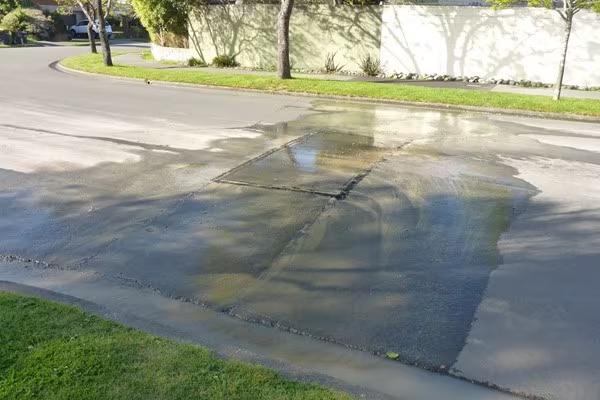
What’s going wrong with our infrastructure?
This opinion piece was first published on Stuff on 15 January 2024.
Recent headlines about the state of New Zealand’s infrastructure have mostly been disillusioning. Whether it’s our inability to afford new interisland ferries, the apparent poor condition of our state highways, or calls for Lower Hutt residents to “stop pooing” ahead of the Jucy Fest music festival, it’s difficult to escape the impression that New Zealand is struggling to maintain its infrastructure somewhere even close to first-world standards.
A sharper focus on actually building the critical stuff we need, and planning it out better ahead of time, has to be key for New Zealand – otherwise we’ll fall deeper into the infrastructure deficit hole.
It’s a focus that civic leaders must take seriously. Budget blowouts have become the norm recently, partly due to key infrastructure costs having risen by as much as 40% over the last three years thanks to a combination of materials shortages, labour shortages, or other capacity constraints caused by Covid. But announcing projects before they’re ready, or before we’ve done enough work to understand how much some options will cost, is just as harmful.
These higher costs make the volume of investment achievable smaller than previously thought, unless we agree to spend even more money. Yet despite rates rises consistently running ahead of broader inflation, our infrastructure investments still haven’t been enough.
Unlike the local government situation, where people are unwilling to stomach even larger rates rises, there are plenty of people who believe the money earmarked for the new government’s promised tax cuts should be kept for spending by government, including on infrastructure.
Instead of blithely insisting we should be taxed more to enable increased spending on infrastructure, more fundamental questions should be asked about the government’s existing spending and whether it is providing value. In a report late last year, the Auditor-General was scathing of the New Zealand Upgrade and Shovel-Ready Programmes and the lack of rigour around planned infrastructure investments. In my view, this example is symptomatic of a lack of restraint in broader government spending over the last few years, leading to an expanding public sector without any corresponding lift in outcomes.
Short-term thinking leads to underinvestment
At first glance, a longer-term perspective suggests that the current level of infrastructure investment is reasonable by historical standards. Investment in non-building construction last year represented 3.3% of total economic activity, well above the 2.7% average of the last 50 years.
However, the obvious anomaly in this long-term average is the underinvestment in infrastructure that occurred between the mid-1980s and mid-2000s. And that period of underinvestment hasn’t been followed by a period of significantly higher investment to catch up – instead we’ve just reverted to normal levels of investment. The implicit prioritisation of short-term profits over longer-term sustainability, associated with privatisation, has seen various parts of this country’s infrastructure networks in crisis at different times over the last 30 years, whether it be electricity supply in the 1990s, rail in the 2000s, or water and wastewater now.
Those of you who are eagle-eyed will have noted that pinning the last example of water and wastewater on privatisation is misleading. Instead, it highlights that the public sector is not immune from short-term thinking or losing sight of its core objectives. It seems that no one has a monopoly on being bad at delivering critical infrastructure in New Zealand.
The wide divergence in the ability of local councils to fund necessary repairs, upgrades, or expansions to their water and wastewater networks reflects differing levels of fiscal prudence. This mixed performance was a driving factor in the previous government’s attempts to bring a greater level of oversight and funding ability to the sector through its Three Waters reforms.
Better planning needed to overcome multiple challenges
It seems unlikely that the infrastructure spending of the last 15 years has made up for much of the underinvestment of the previous 20 years. Yet current indications from the industry are that there is little capacity to further expand activity to any significant degree. Cost pressures over the last few years add weight to that assessment.
Previous infrastructure investment shortfalls are currently being exacerbated by population growth that is at its highest since the early 1950s. Now is precisely the time when more investment is needed to meet growing demand for services (although building ahead of time would have been even better). But the risk is that debt limitations and capacity constraints cause another period of underinvestment.
New Zealand needs to adopt a longer-term strategic plan around its infrastructure investment, with better coordination between central and local government, private investors, and constructors. The project pipeline seems to have become increasingly ad hoc in recent years, with ideological biases from both the left and right undermining the decision-making process and making the future work plan uncertain and lumpy.
An emphasis on better planning to maximise our resources is imperative given the limitations posed by New Zealand’s topography and low population density, as well as our middling incomes by global standards. The effect of the latter factor was reinforced to me last year when driving over the Simplon Pass between Switzerland and Italy – crossing the border into Italy corresponded with a massive decline in road quality from almost motorway standard to something more like a back-country NZ hill road. The Swiss might be renowned for building things well anyway, but having a GDP per capita that is twice as high as New Zealand’s certainly helps if you want to build the best.
Civic leaders will need to make tough calls, but the decisions shouldn’t really be that difficult. Do you put money into critical infrastructure that is failing around us? Or invest in vanity projects or propping up private business? It’s hard to fathom why anyone would invest in a new home movie setup if their shower was flooding the bathroom – the same principle applies at a civic level.















